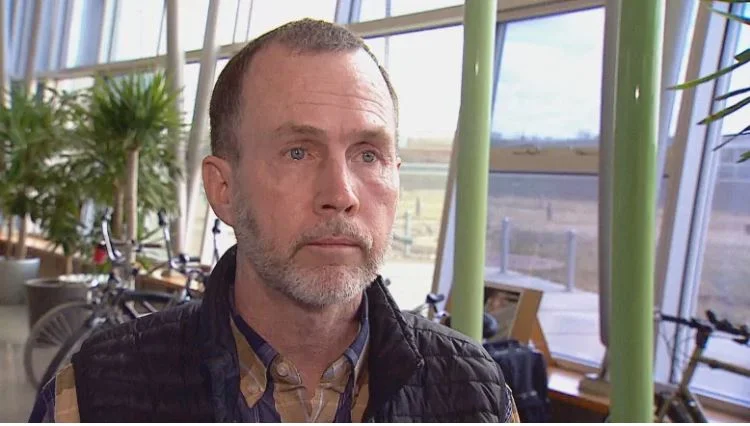With multiple bodies of water under water shortage advisories after a dry start to the month, some fish in Edmonton could be facing a tough winter. Clearwater River, Sturgeon River and the Whitemud and Blackmud creeks currently have water shortage advisories. These are imposed when stream flows or lake or reservoir levels are lower than normal.
Nunavut declares state of emergency over Iqaluit water shortage
The Nunavut government has declared a two-week state of emergency over a water shortage in Iqaluit. Joanna Quassa, the acting minister of community and government services, said Friday that it's meant to ensure the city can get necessary regulatory approvals to immediately begin replenishing its reservoir. "We are committed to working with the City of Iqaluit to ensure water levels will meet the needs of the residents of Iqaluit through the upcoming winter," Quassa said in a statement.
State of Emergency in Canadian Arctic City Due to Water Shortage
On Friday. the city Iqaluit declared state of emergency following a precarious water situation, writes Reuters. The city is located in the territory of Nunavut, in the far north in Canada. The water level in the local river Apex is historically low after a year of little rain, according to data from the last 40 years. Local authorities fear that there will not be enough water in the reservoir to supply the approximately 7800 inhabitants until winter when the river freezes over. The city is now seeking license to pump more water than normally allowed from the Apex river, as well as tapping an additional water source.
Winter’s drastic temperature swings could lead to water leakage issues
The winter of 2021-2022 has had its share of drastic temperature swings that could have flooding implications for homeowners in the not-too-distant future. The freeze-thaw cycle has been repetitive this season which could accentuate stress on building foundations. As a result, older homes with cinder-block basements are especially at risk of structural damage.
Spring runoff potential varies across Saskatchewan from well below normal to above normal
Most of southern Saskatchewan has the potential for a below to well below normal spring runoff, according to preliminary data released Friday by the Water Security Agency. The north, however, could experience a normal to above normal runoff. The WSA said it bases its estimates on a number of factors, including conditions at freeze-up and the snowpack. Most of the southern regions experienced very dry conditions last summer and into the fall, and the snowpack is near normal to below normal. The WSA says this projects to a below normal runoff for an area covering Prince Albert, Saskatoon and Melfort, dipping as far south as Maple Creek and Val Marie.
Verner’s ‘brown water’ problem makes rare winter appearance
West Nipissing municipal staff are flushing hydrants in Verner today as they investigate a mysterious winter appearance of ‘brown water’ during the past couple of weeks. Some residents, but not all, are reporting water issues that have a long history in the area due to manganese found in the Veuve River, the source for Verner’s drinking water. While the mineral is considered safe to ingest, it’s actually required in small amounts in the human diet, it smells and tastes bad and is hard on laundry.
Moncton lays groundwork to deal with cyanobacteria in water supply
Moncton plans to spend $6 million this winter to upgrade its water treatment plant, the first phase of a plan to deal with cyanobacteria in the municipal water supply. Cyanobacteria was found in 2017 in the Turtle Creek watershed, the drinking water source for Moncton, Dieppe and Riverview. Cyanobacteria, also known as blue-green algae, can form blooms and produce toxins harmful to humans and animals. The water remains safe to drink and the multimillion dollar upgrades are meant to keep it that way.
City of Iqaluit declares 2nd water emergency in 2 years
A century of water: As Winnipeg aqueduct turns 100, Shoal Lake finds freedom
The taps to Winnipeg's drinking water were first turned on in April 1919, but as the city celebrated its engineering feat and raised glasses of that clear liquid, another community's fortunes suddenly turned dark. Construction of a new aqueduct plunged Shoal Lake 40 into a forced isolation that it is only now emerging from, 100 years after Winnipeg's politicians locked their sights on the water that cradles the First Nation at the Manitoba–Ontario border. "The price that our community has paid for one community to benefit from that resource, it's just mind-boggling," said Shoal Lake 40 Chief Erwin Redsky.
Calgary learned lessons from Winnipeg on how to deal with frozen water pipes
As Calgary dealt with a particularly frigid winter and a series of stubbornly frozen water lines, it turned for advice to a place that's used to dealing with such things.
Winnipeg.
"Winnipeg has probably a lot more expertise in this area than we do, because it's something they experience fairly routinely," said Chris Huston, the manager of drinking water distribution with the City of Calgary.
There were nearly 300 cases of frozen water-service lines this winter in Calgary, Huston said, and dozens remain frozen even now, despite the arrival of spring.











